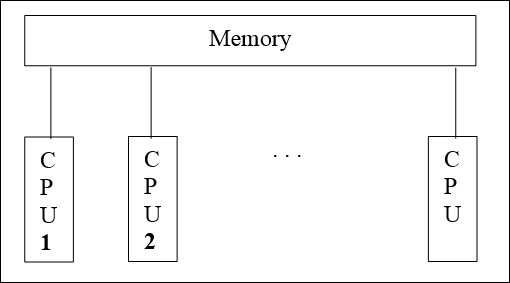Shared Memory Processors (SMP)

Figure 1. Architecture of Shared Memory
In this case, all processors can access to a common memory space. From programming point of view, each process called parallel task, reach to the entire memory space allocated by the program. It is necessary to manage properly the access to this shared memory by introducing barriers and locking mechanisms. The SMP model programming has the advantage to be managed easily. However, the performance of the method depends on the ratio between the memory access speed and the CPU speed.
The parallelism approach used in Radioss SMP is a multi-task programming type. The tasks are explicitly managed by the programmer. The computation tasks are attributed to the processors by a dynamic procedure as they are available. This approach is especially adapted to the super-computers used as computation server where the load of a given processor varies with respect to others. The SMP version is developed for computers with shared memory architecture and cannot be used efficiently on the super-computers with distributed memory or cluster structures.
The Radioss SMP version is constantly improved since the first release. However, the efficiency of SMP version has to be updated to take into account the evolution of computer architecture in memory management and CPU speed.